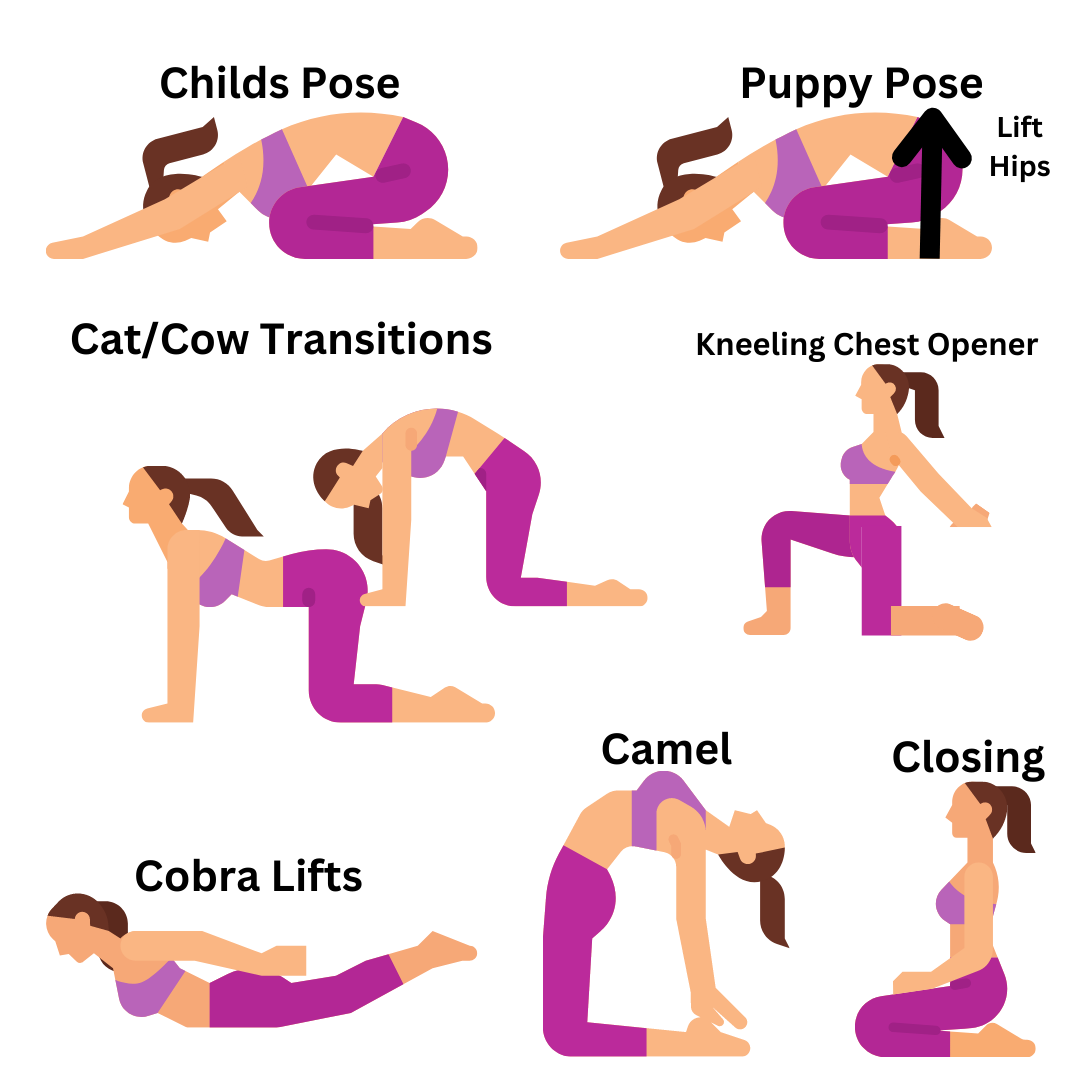The Healing Power of Yoga & The Difference It Can Make In Your Life
The Healing Power of Yoga
Stress affects our lives physically, mentally, emotionally and ultimately spiritually, making it hard to connect to the love that is our essence. Yoga offers several ways of dealing with stress, including active meditation (focusing the mind), deep stretching (physical sensations), AND muscle-strengthening workouts. This being said, yoga is beneficial for the different layers of your being; body, mind, emotion and spirit. This blog post is here to enlighten you with the healing power of yoga and how yoga can make a difference in your life if you practice it daily. So, if you're interested in experiencing more self-love resulting in better relationships, living healthier and being more productive then this is the article for you.
Yoga is an ancient practice that has been passed down for thousands of years. The word "Yoga" itself means, 'to unite' and therefore, it helps the mind, body, and soul to feel at ease by encouraging you to release high-vibration feelings altogether. As you unite your body, mind and spirit you align with your truest and highest self, you become your own teacher and trust in the wisdom that each of your own personal layers and personal experience has to offer you. As you lean into your own depth you cultivate love and appreciation for all that has created you to be the unique individual that you are, realizing that there is only one YOU and that you are a unique gift to this life experience. There has never been another you and will never be another you. As you come to this deep understanding you open up the guidance to your own potential.
Yoga is a great way to deepen the connection of layers within you. You improve your overall balance, strength and awareness. The calming effect of Yoga also helps with mental health issues like stress or anxiety.
Benefits of Yoga for Your MENTAL, EMOTIONAL and SPIRITUAL Self
Yoga is a great way to unwind, clear your thoughts, and feel more love. Incorporating yoga with meditation has vital health benefits.
Yoga breath work helps the brain's nerve cell activation.
Helps you establish mindfulness which relieves chronic thought patterns that cause stress.
Improves quantity and quality of sleep.
Helps you sharpen your concentration on work by becoming aware of negative thought processes.
Helps to become aware of, process and release emotions.
Connects you to the unconditional love that is your essence.
Connects you to your higher self and soul.
Offered clarity and guidance.
Changes the way you see and interact with the world inside and outside of you.
Increases compassion for yourself and others.
Benefits of Yoga for Your PHYSICAL Self
If your emphasis is on building endurance, body awareness, balance, core strength, mobility and range of motion with flexibility, daily yoga practice will provide you with the following physical benefits.
Improves respiration.
Increases metabolism.
Helps with weight loss.
Increases flexibility in muscles.
Increases mobility around joints.
Help your tone and gain lean muscle mass.
Relieves chronic joint and muscle pain syndrome.
Reduces the risk of heart health problems like high blood pressure or cardiomyopathy.
What to Expect in Long-Run?
If Yoga is a consistent part of your fitness routine, then here are a few main physical benefits that you will experience from a long term-practice:
Endurance – overtime you make it through your whole workout with fewer number breaks, play harder in the last few minutes, and have more overall energy preserved as well.
Body awareness – you become more physically aware of every muscle in your body. You can facilitate a better connection between your body's muscular and skeletal systems with your mind.
Balance – daily practice will help you develop balance by learning to engage your muscles actively and improve your ability to revert to perturbations or unstable situations mindfully. Balance also extends to the balance between your mental, emotional and spiritual self. This balance deepens your understanding and connection to each of these components of YOU.
Core strength – over time, you learn to properly engage your core and strengthen this primary source of stability in your body while improving your posture and taking pressure off your lower back to improve your spinal health.
Flexibility – practice will reduce the risk of injury, reduce the recovery time, and help you gain more range of motion to increase your overall strength and power.
Some other added perks are increased blood flow and reduced symptoms of anxiety and depression.
4 Key Concepts You Need to Master to Feel the Power of Yoga
Yoga is no magic pill to pop and find all health solutions at once. Nothing will work for you until you make your yoga practice and your well-being the top-most priority. Here is the list of four key concepts that one should master to experience the associated health benefits of Yoga.
Be physically aware. The most important thing you should do while performing Yoga is listening to your body. Listen to what feels good, what feels uncomfortable, and what feels painful. Notice the sensations your body is revealing. Sensation is how the body communicates. Tingling pain or pinching in the nerve should be avoided, while moderate discomfort is usually your body becoming accustomed to a deeper range of motion or stretching. Pain is never what you want to feel but there is wisdom within our pain. It is the body’s way of communicating to you that something needs your attention. Whether this means it needs some warm compression, a break from being overworked or even to see someone about what you're feeling physically, yoga will help you to understand your body in a deeper way.
Warm it up. Start with full-body dynamic stretching routines to warm up the muscles and joints. This is part of the reason I love heating my space and practicing in a heated studio. The heat prepares your body before getting into poses that push flexibility boundaries, increase range of motion and draw our awareness into the present moment. Warming the body is very important and so it mentally and spiritually prepares you for your practice. There is a warm-up of the mind when you tune-in at the start of a kundalini class or when you set up your breath at the beginning of a vinyasa or yin class. This is the mental, emotional and spiritual “warm-up”.
Take your time. Do not try to force ANYTHING, EVER. Over time, your mind, emotions and body will get used to these poses, and your level of awareness, flexibility and strength will increase. Pushing yourself beyond your physical limits is similar to attempting to drink gallons of water at once. You don't drink gallons of water at once because you know you will choke, so the same goes with yoga as well. Be gentle and compassionate along your yoga journey, consider each pose as just a step on a long journey.
Breathing - Last but not least is the correct breathing technique. In yoga, you want to focus on binding your breath with your moves. When you inhale, lengthen, or rise, breathing must be constant. Try and concentrate on breathing in and out of the nose as slowly as possible to help you control your breathing rate. So, always remember to hold your breath and then control your body. We often think that the body controls the breath but it is actually the opposite, the breath controls the body. Having this awareness and practicing controlled breathing on our mats supports us when we are off our mats. When you are connected to your breath you are connected to the present moment and that is the ONLY moment we have ANY control over. The more we can stay in the present the more “richness” and connection we can experience in our lives. This is where the depth of unconditional love exists.
The Exercise Guide – 6 Yoga Poses To Open Your Heart & Better Your Relationship With Yourself & Others
This exercise guide includes six heart-opening yoga poses. This movement guide will briefly and effectively explain the following points:
List of target muscles or muscle groups of each activity.
Provide specific examples of physical benefits.
Explain the proper execution of poses using concise language and visual aids.
Include modifications and variations for people who cannot perform the exercise as described.
1. Childs Pose
Basic grounding pose. This is a great yoga pose to start your practice to connect to your breath and ground into your body. Here you start to open your chest which is your heart space.
Target Area: Hips (emotions) and chest (heart/love/compassion)
Practical Benefits: Grounding posture, releasing shoulder tension, turning attention inward, easily connect to breath and increase body awareness.
The Technique:
Come to the back of your mat.
Lower to your knees.
Bring your big toes to touch.
Bring your knees out as wide as feels comfortable in your body in this moment.
Sink your hips back toward your heals.
Walk your hands forward allowing your forehead to rest down onto your mat.
Bring your awareness to your breath and breathe deeply into your belly, with each exhale allow your chest to sink closer to the mat beneath you.
Hold the pose for 5-10 deep breaths.
Tip: Form a straight line from your tailbone to the crown of your head. With each breath allow your body to sink more deeply into the mat.
2. Puppy Pose
This is a pose to continue to gently open your heart, chest and shoulders. It is an easy transition from childs pose to puppy pose.
Target Area: Chest, Shoulders, Spine
Practical Benefits: Helps to correct posture, the curling forward of the shoulders and to lengthen the spine.
The Technique:
From Childs pose, press your elbows into the floor and shift your knees under your hips, keeping your hips lifted.
Extend your hands toward the top of your mat directly from your shoulders.
With each breath allow your chest to sink more deeply into the mat.
Hold the pose for 5 - 10 deep breaths.
Tips: Breath deeply here, breathing into the upper back observing the stretch through the upper body.
3. Cat & Cow Transition
This is a perfect dynamic stretching pose for EVERY DAY, including before every yoga practice, first thing in the morning or between your working hours to give your spine good blood circulation. For today let’s focus on shining the chest forward and pressing the spine toward the ceiling, making this a dramatic movement.
Target Area: Spine and chest.
Practical Benefits: Relieving back pain, improving spine mobility, opening the chest, stretching the shoulders, improving posture and preparing the spine for physical activity.
The Technique:
Start in a tabletop position, knees and hands on the ground with the shoelace side of your feet pressing into the mat, knees under hips, and hands under shoulders. Spread your fingers wide to establish stability.
Inhale and arch your back, pulling the chest forward while reaching the tailbone upward.
Exhale and round the back, bringing the tailbone and head towards one another under the body, pressing into the hands to press the back upwards and separate the shoulder blades.
Repeat the transition linking breath to movement for 5 - 10 breaths.
Tips: Make this movement as slow and consistent as possible. Deepen your breath. Your length should match the time it takes you to move from cat (rounded back) to cow (arched back). Limit the arch if you have lower back pain.
4. Kneeling Chest Opener
Target Areas: Spine, Shoulders and Chest.
Practical Benefits: Opening the chest and shoulders while working on balance and stability.
The Technique:
Shift from tabletop onto your knees.
Clasp your hands behind your back and lift your chin and chest to the ceiling.
Take 5-10 deep breaths feeling your chest open and expand with each breath.
Tips: Breath in as much as possible to expand the chest cavity.
5. Cobra Pose
Target Areas: Chest, Shoulders, Quads, and Core.
Practical Benefits: Opening your chest and shoulders while lengthening the back side of the body and activating the core.
The Technique:
Shift down onto your belly. Chin to floor.
Zip your legs up together pressing the shoelace side of your feet into the floor.
Clasp your hands together behind your back, and lengthen them toward your heels.
On an INHALE lift your chest and shoulders off the mat.
Keep your gaze in front of you about 6 inches on the floor, maintaining a neutral neck.
EXHALE lower your chest down.
Repeat this movement 5-10 times linking your breath to your movement.
Release your body down and relax your ENTIRE body.
Tip: Maintain a straight line with your body. Feel your chest and breath expand as you lift.
6. Camel Pose- READ INSTRUCTIONS FULL BEFORE DOING POSE!
Target Areas: Lower back, spine and chest.
Practical Benefits: This is our deepest heart opener. Be Gentle! This pose reduces the tightness in your chest and the entire front side of your body. Improves circulation and regulates the nervous system.
The Technique:
Press onto your knees, and bring your knees a little wider than hip-width distance.
Bring your feet toward each other creating a triangle base from your knees to your feet.
Bring your hands to your lower back or yogi back pockets, pointing your fingers UP.
Shift your hips forward as you arch your spine, opening through your chest.
Tilt your chin to the ceiling. Option to stay here.
Option to bring your hands to your ankles and lean back as you press your hips forward and tilt your head back.
Breathe here 5 deep breaths.
Bring your hands back to your low back and lift up as you sink your hips to your heels. Let your palms come face down onto your thighs.
Close your eyes and breathe, observing your internal space.
Tips: You may be dizzy here. Take a moment to breathe and observe. Deep heart openers can bring up “stuff” be gentle with yourself. Love yourself every step of the journey.
Press onto your back and cactus out your arms. Allow relaxation and breathe deeply.
How Can Yoga Make a Difference in Your Life?
When we talk about self-development, remember self cannot be developed because you have already been developed and blessed by nature. So, everything you do should be towards enhancing your true nature and connecting you to the unconditional love that is your essence. Yoga is a tool of self-discovery. It helps you enhance your nature and characteristics, mental, emotional and physical, and enables you to raise your vibration for a better life. A daily yoga practice will open your brain towards positive thinking, free you from negative thought patterns and increase your bodily strength. This journey of self-discovery through yoga is the ultimate truth of life.
There are numerous yoga practices, but they all share the same intention – helping people find their true selves through introspection and self-awareness. Even if you don't have enough time or space to practice asana or other forms of yoga regularly, there are plenty of ways to incorporate some form of yoga into your day. For example, try meditating at lunchtime each day instead of scrolling through social media feeds! Remember that any act of selfless service is considered yoga. There are plenty of opportunities every day (even while sitting at work!) where we can channel our energy into something positive. Yoga isn't just about physical movement; there are meditative practices as well—so don't worry if you're not an athlete! Give yourself time each day to do what makes YOU feel good inside AND outside.
If you need help deciding what type of modality may work best for you (or how to get started), reach out! I am a support system for you!
The light, love, and wisdom in me sees, honors, rejects and encourages the light, love and wisdom within you. NAMASTE


